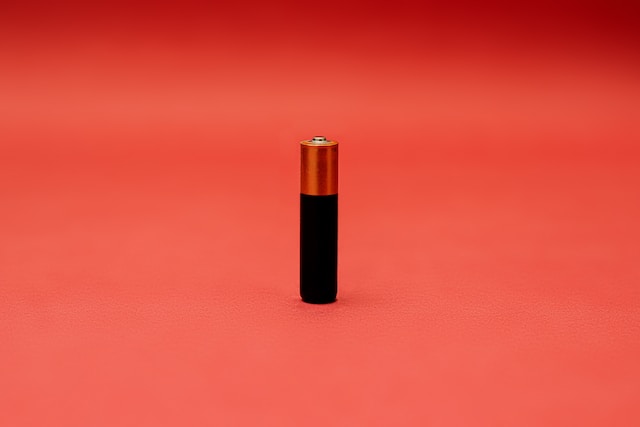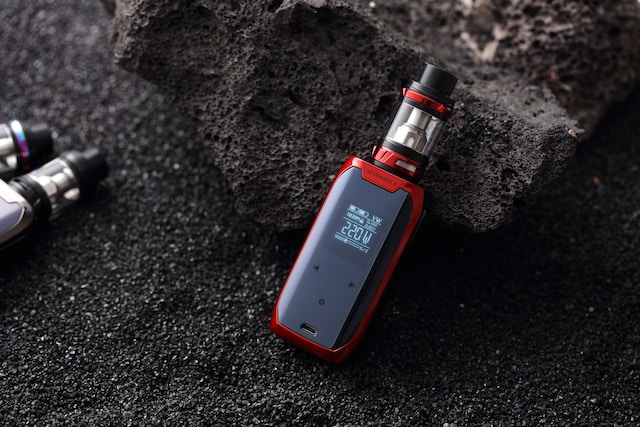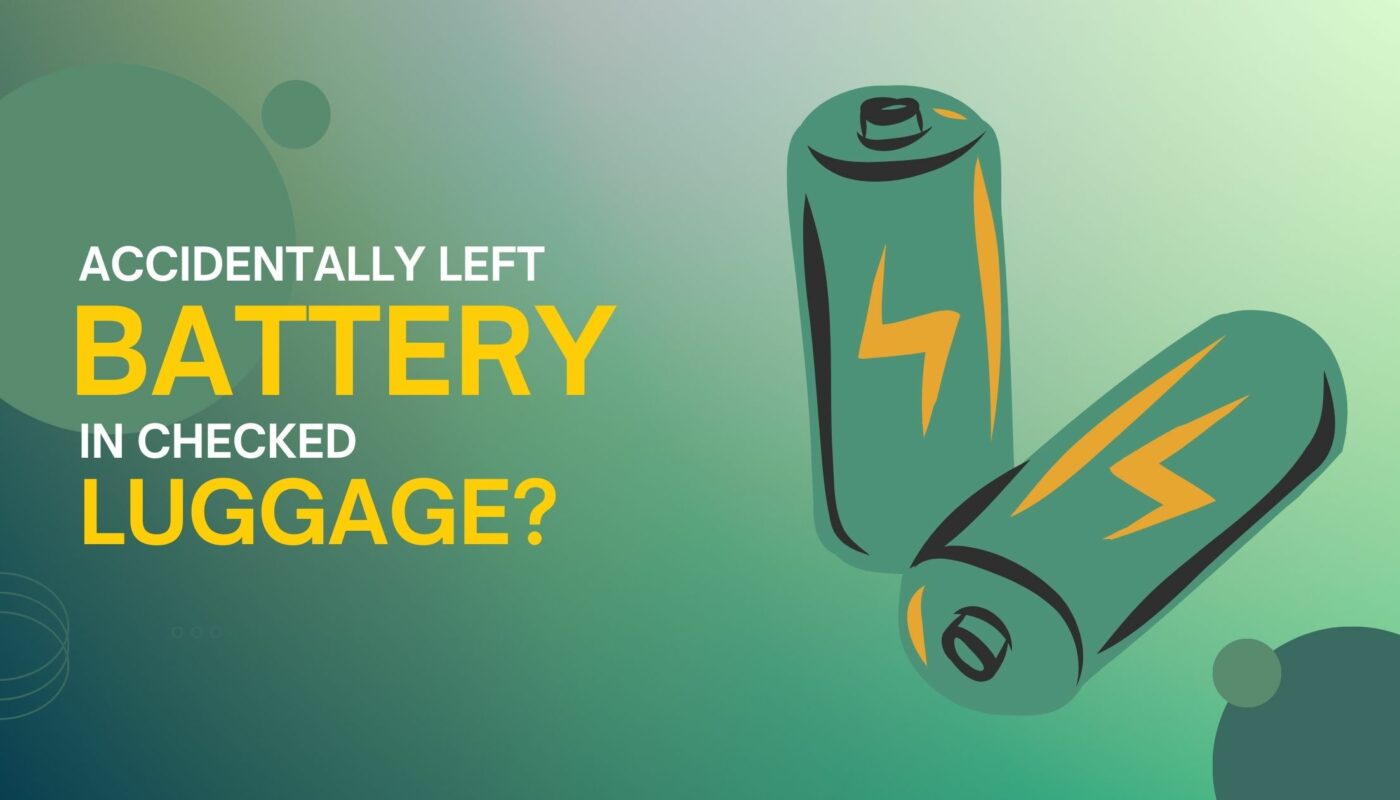Have you ever accidentally left a battery in your checked luggage, only to realize it when it’s too late? Don’t panic, there are steps you can take to rectify the situation.
If you find yourself in the unfortunate situation of accidentally leaving a battery in your checked luggage, it’s crucial to take immediate action. Ignoring the issue or hoping for the best can have serious consequences. In this article, we will explore the steps you can take to resolve the situation and ensure a safe and stress-free journey.
Accidentally Left Battery In Checked Luggage? Here’s What You Can Do
In general, if a battery is accidentally left in checked luggage, it is important to notify the airline promptly. Lithium batteries are considered hazardous materials and are prohibited from being stored in checked baggage due to the risk of fire.
The airline may have specific procedures in place for handling such situations, and they will guide you on how to safely remove the battery from your luggage.
Inform Airport Security or Airline Staff
If you accidentally leave a battery in your checked luggage, it is important to inform airport security or airline staff immediately.
This will help them understand the circumstances and take the necessary precautions to ensure safety.
By informing airport security or airline staff, you are also allowing them to take any extra precautions they deem necessary such as searching your bags or requiring you to remove the battery from your luggage.
Battery Regulations

Most airlines have specific regulations regarding batteries in checked baggage. These regulations are typically designed to ensure the safety of passengers and those working at airports.
Check Airline Policies
In addition to familiarising yourself with the battery regulations, it is also important to check your airline’s policies on batteries in checked luggage.
If you are unsure of the policies, it is best to contact your airline directly for more information.
They will be able to provide you with any additional details or clarify any questions you may have.
Potential Outcomes
The potential outcomes when leaving a battery in checked baggage can vary depending on the airline and the type of battery. In some cases, the battery may be removed from your luggage or you may be required to remove it yourself.
In other cases, your luggage may be delayed due to safety concerns.
-
Removal of Battery
If an airline requires that you remove a battery from your checked luggage, they will typically provide instructions on how to safely do so.
-
Delayed Luggage
If your luggage is delayed due to a battery in your checked bag, it is important to remain patient and understanding. The airline may require additional time to inspect the luggage and ensure that it is safe for travel.
Note📝: Be sure to contact the airline if you have any questions or concerns.
Can You Put The Laptop Charger In Checked Baggage?
Yes, you can put a laptop charger in your checked baggage. Unlike power banks, which use lithium-ion batteries and are restricted to checked baggage, laptop chargers do not have such restrictions. However, it is always a good idea to check with the specific airline you are flying with.
Some airlines may have their own regulations regarding electronic devices and chargers. It is also recommended to pack the charger securely to prevent any damage during transit.
What Are The Transportation Security Administration (TSA) Rules And Regulations On Battery?
Lithium-ion batteries must be carried in carry-on baggage and are limited to a certain watt-hour rating. Spare batteries must also be individually protected to prevent short circuits. The Transportation Security Administration (TSA) rules and regulations on batteries for air travel, are given below:
What Are The Different Types Of Batteries Allowed By The Transportation Security Administration (TSA)?
Generally, small, non-spillable batteries, such as alkaline, nickel-metal hydride (NiMH), and nickel-cadmium (NiCd) batteries, are allowed in both carry-on and checked baggage. However, lithium batteries, especially those with a high power capacity, are subject to stricter regulations. Lithium-ion batteries, commonly used in electronic devices, are allowed in carry-on baggage.
However, there are restrictions on the size and quantity. Lithium metal batteries, which are typically used in watches and calculators, are also allowed in carry-on baggage but are limited in size and quantity.
However, spare lithium batteries, whether lithium-ion or lithium metal, are not allowed in checked baggage and must be carried in carry-on baggage.
Lithium Batteries With 100 Watt Hours Or Less In A Device:
According to the TSA, it is permissible to carry these types of lithium batteries (as well as power banks and cell phone charging cases) in both carry-on bags and checked luggage.
Note📝: Spare (uninstalled) lithium ion and lithium metal batteries must be carried in carry-on baggage only.
Larger Lithium Ion Batteries (101–160 Wh):
Passengers may carry up to two spare larger lithium-ion batteries with airline approval.
These higher-capacity batteries must be individually protected to prevent short circuits, such as by insulation tape or placing each battery in a separate plastic bag or protective pouch.
The watt-hours of the battery must be marked on the outside of the package.
Spare (Uninstalled) Lithium Ion And Lithium Metal Batteries:
These types of batteries must be carried in carry-on baggage only, regardless of watt-hours.
Note📝: It is important to keep them in their original packaging or a resealable plastic bag to prevent any damage that can occur if there is contact with other metal objects.
Here’s a table outlining different types of batteries, their capacities, and whether they are generally allowed on airplanes.
| Battery Type | Capacity | Generally Allowed on Airplanes? |
| Small Lithium-ion Batteries | Up to 100 Wh (watt-hours) | Yes, in carry-on baggage. Some restrictions may apply. |
| Between 101-160 Wh | Allowed with airline approval and specific conditions. | |
| Above 160 Wh | Generally not allowed. | |
| Lithium Polymer (LiPo) Batteries | Generally follows lithium-ion rules | Similar rules apply as for lithium-ion batteries. |
| Alkaline Batteries | Various | Yes, in both checked and carry-on baggage. |
| Nickel Metal Hydride (NiMH) Batteries | Various | Yes, in both checked and carry-on baggage. |
| Lithium Metal Batteries | Generally not allowed for passengers | Rarely allowed and subject to strict conditions. |
| Lead Acid Batteries | Various | Rarely allowed due to weight and hazards. |
| Ni-Cd Batteries | Various | Rarely allowed due to environmental concerns. |
Do You Have To Take Out Portable Chargers For TSA?
The answer is no. Chargers and cables for electronic devices do not need to be removed from your carry-on when going through airport security. However, it is important to note that these items can clutter the X-ray images, especially if you have packed multiple chargers.
In such cases, TSA agents might ask you to remove them from your bag and place them in a separate bin to ensure a clearer view during the security screening process.
Why Are Lithium Batteries Not Allowed To Carry Battery On Plane?
In general lithium batteries are not allowed to be carried on planes due to the risk of combustion. Additionally, lithium batteries have a high energy density, which means they can store a significant amount of energy in a small space.
However, this also makes them more prone to overheating and catching fire.
If a lithium battery were to catch fire on a plane, it could lead to a catastrophic situation. This is because the fires on planes are extremely dangerous and difficult to extinguish.
What Happens If You Put A Vape In Checked Luggage?
Firstly, it is important to note that vaping devices are not allowed to be used during the flight for safety reasons. While it may seem like a safe option to pack the device in checked luggage since it cannot be used on the plane.
According to these rules, electronic smoking devices are not allowed in carry-on baggage. However, there is a possibility that they may be confiscated if packed in checked baggage.
It is also crucial to consider the contents of the vape device.
If it contains nicotine, it is illegal to pack it in checked baggage. Customs officers may view it as a tobacco product, leading to potential fines or even legal consequences.
In addition, there is a potential danger of vape batteries exploding due to the confined space and high temperatures in the cargo hold.
Tip 📌: To mitigate concerns, it is advised to pack electronic smoking devices in carry-on luggage when flying.
You Accidentally Left Your Vape In Checked Luggage – What To Do?

If you accidentally left your vape in checked luggage, the first thing you should do is inform the airline or airport security immediately. They will have specific protocols in place for dealing with such situations and can provide guidance on how to proceed.
It is important to be honest and upfront about the mistake as trying to hide it or smuggle it through security can lead to serious consequences.
Depending on the regulations and policies of the airport or airline, they may confiscate the vape, dispose of it, or allow you to retrieve it after going through additional security measures.
What Happens If You Forget A Laptop Battery In Your Checked Luggage? (in Europe)
Generally, if you forget a laptop battery in your checked luggage in Europe, it is likely that it will be detected during the scanning process. Once the battery is found, you will be asked to remove it from your luggage.
However, there may be additional consequences depending on the specific regulations and policies of the airline or airport.
In some cases, you may face fines or even prosecution for attempting to transport a prohibited item. Alternatively, the battery may be confiscated by airport security.
Tip 📌: Always check and adhere to the guidelines and restrictions regarding the transportation of batteries in both carry-on and checked luggage to avoid any potential issues or penalties.
FAQs
Are Batteries Allowed In Carry On?
Yes, batteries are allowed in carry-on luggage. However, lithium batteries, which are commonly used in electronic devices, must be carried in carry-on baggage due to safety regulations. It is important to ensure that the batteries are properly packaged and protected to prevent short-circuiting or damage.
Are Batteries Allowed In Checked Baggage?
The straightforward answer is no. Batteries are generally not allowed in checked baggage. According to the Federal Aviation Administration (FAA), lithium batteries, which are commonly used in electronic devices, are not allowed in checked baggage due to the risk of fire.
However, passengers are allowed to bring certain types of batteries in their carry-on baggage, as long as they meet specific requirements and are properly packaged.
Are Battery Operated Toys Allowed In Flight?
Battery-operated toys are generally allowed on flights. Traditional battery-powered toys, such as those that use AA or AAA batteries, can be checked or carried on in both checked and carry-on bags. The Transportation Security Administration (TSA) allows toys to be brought on board.
However, it is always a good idea to double-check the specific regulations and guidelines of the airline you are flying with.
It is also important to ensure that the batteries are properly secured and that the toy does not pose any safety risks during the flight.
Can Spare Batteries Go In Checked Luggage?
No, spare batteries cannot be placed in checked luggage, but in carry-on luggage. According to regulations, spare lithium metal batteries, lithium-ion batteries, electronic cigarettes, and vaping devices are not allowed in checked baggage. These items must be carried with the passenger in their carry-on baggage.
This is due to safety concerns regarding these types of batteries and devices, as they have the potential to overheat or catch fire if not handled properly.
Can You Carry GoPro Batteries On A Plane?
Yes, you can carry spare lithium batteries for your GoPro on a plane, but they must be in your carry-on baggage. It is not allowed to pack them in checked luggage due to safety regulations. Keep the batteries in a protective case to prevent damage or short-circuiting during the flight.
Can You Bring Ni-MH Battery On Plane?
Yes, you can bring a Ni-MH battery on a plane. According to the Transportation Security Administration (TSA), dry cell rechargeable batteries like Nickel Metal Hydride (NiMH) are allowed in carry-on bags. This includes commonly used sizes such as AA, AAA, C, D, and 9-volt batteries, as well as button-sized cells.
Conclusion
In the event of unintentionally leaving a battery in your checked luggage, immediate action is key. Notify airline personnel or security promptly. Adhere to lithium battery regulations due to safety concerns. Consequences can vary, from battery removal to delayed luggage.
Remember: always double-check your belongings, follow airline instructions, and prioritize safety for a smoother resolution process.







